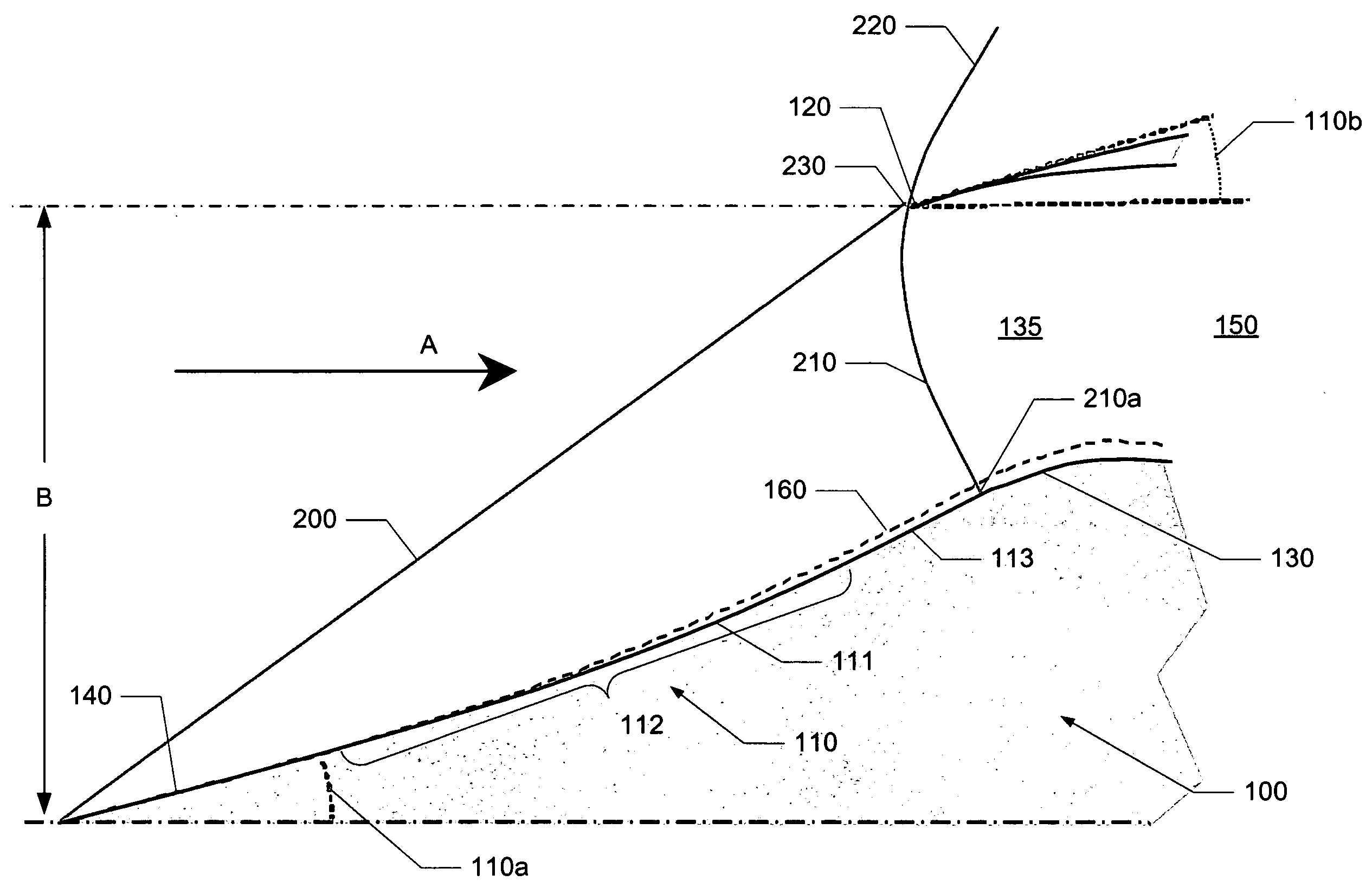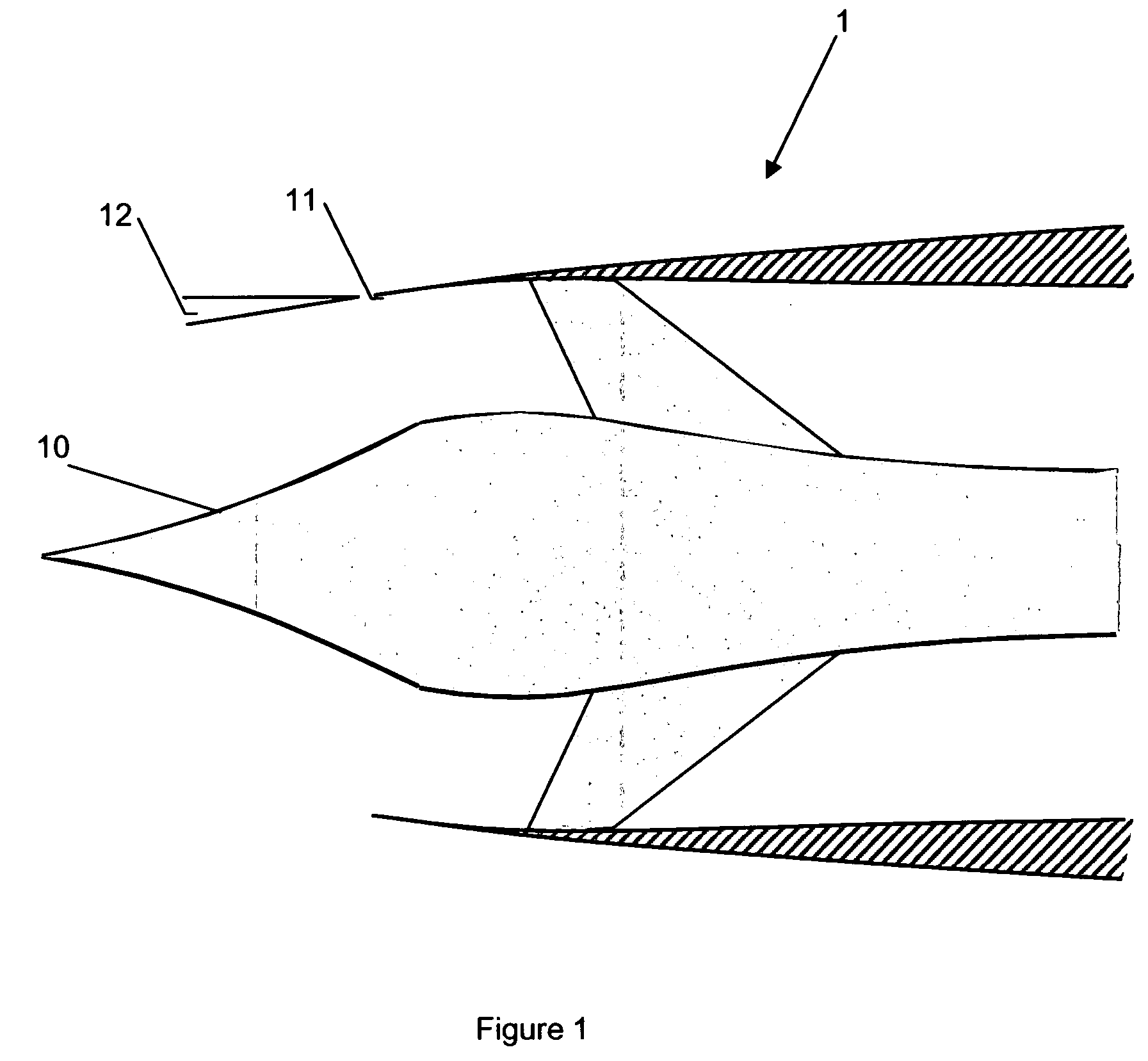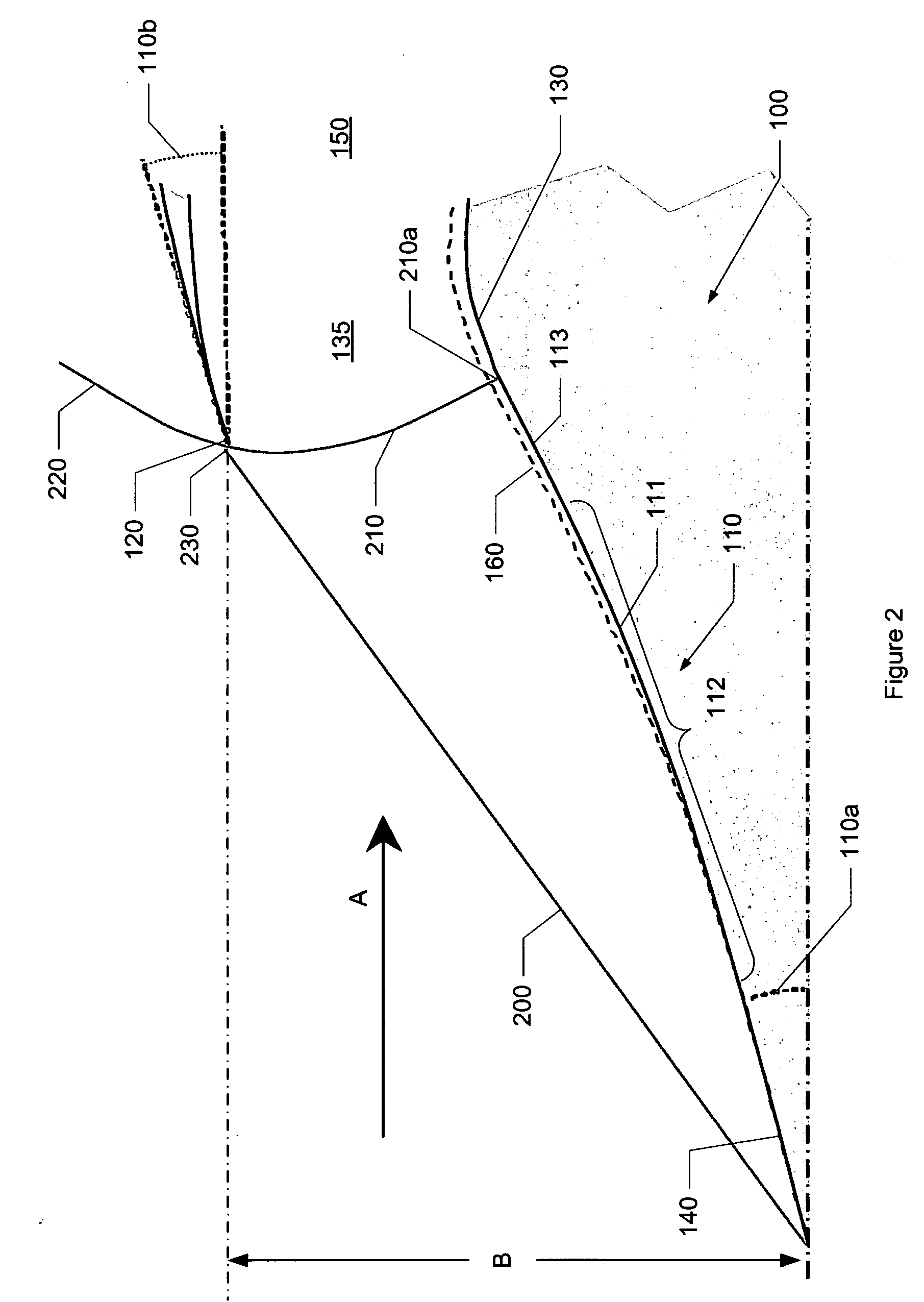Low shock strength inlet
a shock strength and low-pass filter technology, applied in the direction of machines/engines, combustion air/fuel air treatment, composite engine plants, etc., can solve the problems of reducing the efficiency of inlet pressure recovery and flow pumping, complex inlet design with high drag, and affecting the flow stability of the diffuser
- Summary
- Abstract
- Description
- Claims
- Application Information
AI Technical Summary
Benefits of technology
Problems solved by technology
Method used
Image
Examples
Embodiment Construction
[0019]The present disclosure will now be described more fully with reference to the Figures in which various embodiments of the invention are shown. The subject matter of this disclosure may, however, be embodied in many different forms and should not be construed as being limited to the embodiments set forth herein.
[0020]An embodiment of the invention may include a supersonic inlet for supersonic aircraft that is configured to reduce the inlet's contribution to a supersonic aircraft's sonic boom signature. To accomplish this, embodiments of the invention may position the cowl lip of the inlet such that the inlet captures the initial conic and / or oblique shock within the intake plane, preventing the conic shock energy or discontinuity from merging with the shocks generated by the airframe during supersonic flight. It is also contemplated that the cowl angle of the nacelle may be reduced to zero or substantially zero in order to reduce the contribution of cowl shock and cowl drag on ...
PUM
 Login to View More
Login to View More Abstract
Description
Claims
Application Information
 Login to View More
Login to View More - R&D
- Intellectual Property
- Life Sciences
- Materials
- Tech Scout
- Unparalleled Data Quality
- Higher Quality Content
- 60% Fewer Hallucinations
Browse by: Latest US Patents, China's latest patents, Technical Efficacy Thesaurus, Application Domain, Technology Topic, Popular Technical Reports.
© 2025 PatSnap. All rights reserved.Legal|Privacy policy|Modern Slavery Act Transparency Statement|Sitemap|About US| Contact US: help@patsnap.com



